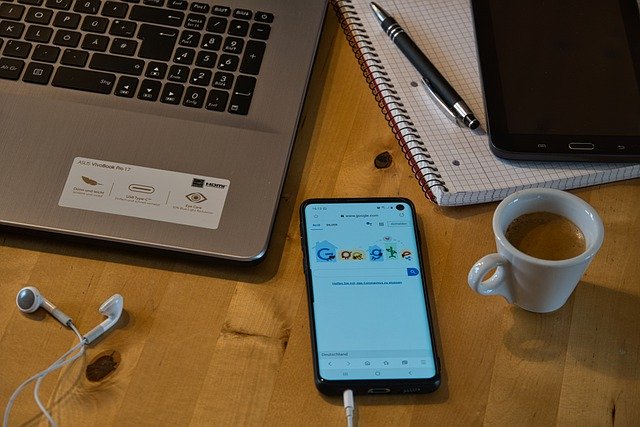There are numerous suggestions available for managing remotely given that many people are working at home because of the social isolation associated with the Coronavirus. In a previous post, I explored some of the challenges and opportunities involved in working from home that managers need to be aware of. There are many common strategies employed by companies in relation to communication, support, information management, performance management, accountability and frequency and modes of interaction between managers and staff (and amongst staff themselves). However, it is vitally important that the practices and processes of remote management reflect and reinforce organisation culture.
Reflect organisation values in remote management
practices, processes and tools
While there are many suggestions regarding best practices
for remote management (for example, on YouTube©), it is important not to just
“copy and paste” them into your own company’s processes. What is really needed is to build
company-wide processes for remote management that reflect your company’s core
values, e.g. friendliness, empowerment, accountability, transparency,
consistency, inclusive. Elizabeth Hall provides
a comprehensive example of how Trello’s values are embedded in a wide range of
remote management processes, systems and practices for their global
organisation, e.g. virtual parties, chat system with multiple channels (work
and personal), saying good morning (despite country of location) and mandatory
overlap hours for working wherever in the world.
Communication practices and processes for remote management
One of the basic rules for managing remotely
is to find ways to compensate for the lack of social interaction that people
would normally have in a “bricks and mortar” environment. From a management perspective, systems and
processes for accountability are also important but need to be culturally
compatible. Communication strategies can
be adapted to the nature of the work, location(s) of workers, time cycle of
producing product and services and sensitivity/urgency of the core
business. Here are some communication
strategies that companies employ to achieve these goals of social interaction,
accountability and adaptability:
- Mandatory online meetings – these can be
daily or weekly and are mandatory often within a flexible working
arrangement. This ensures one form of
interaction across the team and can build in accountability via a reporting
mechanism (e.g. against KPIs, project milestones, or output measures). For
teams that have a high level of interdependency, a daily “stand-up” meeting via
video conferencing can be important to ensure that people are “in-synch” in
relation to work-in-progress. The
sharing involved can take many forms, e.g. sharing “three things I did
yesterday” and “three things I plan to do today”. The manager then has the opportunity to check
for coordination of effort and re-visit priorities in consultation with staff. Some companies that have a mixed mode
arrangement (work from home and work from company offices) ensure that all
participants in the mandatory meetings are online (not a mix of face-to-face
and virtual participation) – a practice designed to build in consistency and
inclusiveness.
- Replicating the “water cooler” experience
– finding ways to make up for the lack of social interaction of remote
workers. The processes employed are
intended to build trust and understanding through mutual sharing, informal
information exchange and storytelling.
Processes range from continuous online chat channels (both business and
personal) to time-structured interactions for pairs or groups of four to enable
them to share information about their personal life through online video
conferencing (videos of the interaction can be shared more widely in the
organisation with consent of the parties involved).
- Face-to-face interactions for the group –
many companies institute an annual get together for a team (or linked teams) to
create connections, build relationships, facilitate consistent communication of
company information, share progress/strategies/intelligence and for forward
planning. These can take the form of
retreats, conferences or workshops and incorporate games, partner interactions
and/or social events. It is important
that the structure and processes of these scheduled face-to-face interactions
reflect the characteristics of the company’s culture such as values, rituals
and norms.
- One-on-one interactions with the manager
– ideally these entail visits by the manager to individual staff members. However, regular and predictable one-on-one
interactions are important to gauge how a staff member is coping with their
work and environment and to provide a means of accountability. It is increasingly important that managers
find a balance between task and personal needs of staff when having these
interactions. In crisis times like the
present, managers may need to change the balance by giving employees more slack
and spending more time on personal matters to provide additional personal
support. This is necessary when working
from home is enforced and not a matter of choice, when there are high levels of
job insecurity and the broader environment is turbulent and uncertain. Managers have a duty of care in relation to
the mental
health of their employees. If they
observe signs
of mental illness, they can employ approaches such as the “R U Okay?” enquiry and access the relevant
resources.
Processes and systems to support work achievement
It is important to put in place processes, systems,
technology and policies to support effective remote management. Clarity around expectations and system
processes supports efficiency and effectiveness and reduces misunderstanding
and conflict. Developing protocols,
practices and rituals provides some degree of certainty in a very uncertain
world. Strategies companies employ to
support work achievement include:
- Setting expectations: being clear with staff about performance and behavioural expectations is critical at the outset. Included in this is establishing onboarding processes for new staff so that they understand what is expected of them as well as become familiar with the team’s processes and systems. It is common for different teams (e.g. system developers vs sales staff) to have different preferences about the means of communicating – e.g. email vs phone. At the outset, the manager can support teams to develop groundrules about how they want to operate and collaborate. For an established team, this could include exploration of the “unwritten rules” which create behavioural norms unconsciously. Clear expectations provide the stimulus for personal motivation and contribution and the groundwork for performance management. Some organisations employ 360-degree feedback to support performance management and identify development needs – the frequency of these feedback processes (e.g. quarterly, half-yearly or annually) will depend on the time cycle of the organisation and the need to highlight accountability.
- Systems development: develop systems and procedures to support daily processing and achievement of team’s goals. These should be documented and readily available to all staff. In the absence of formal systems and procedures, information and intelligence can be lost and result in inconsistent treatment of staff and customers. Systems should cover data storage, retrieval and editing. Cloud storage is often recommended for ease of access for remote workers. Visuals such as flow charts, diagrams and videos can be used to support communication about systems and procedures.
- Support for workers in remote localities – often remotely located employees feel “left out” because their needs are not taken into account. They suffer from inadequate infrastructure, the increased cost and limited availability of transportation and limited resources. Ways to reduce the sense of isolation for remotely located workers include establishing a “buddy” system; visits by senior management; developing joint projects involving these staff and people in hub localities; and connecting them with local groups, organisations and government entities. To help people in remote localities really feel as if they belong to the organisation, the manager can involve them in planning and review processes, ensure equitable access to training and be conscious of their timeframes (and time zones where relevant) and commitments when scheduling meetings.
- Facilitate remote social interaction – this involves establishing a culturally appropriate way of providing fun and light relief so that staff can interact on a non-work basis. Some groups have instituted virtual coffee breaks or lunches and others have introduced a virtual “happy hour”, while some groups with a light-hearted approach have enjoyed virtual games and parties. Whatever form of remote social interaction you choose, it is important to encourage staff to take time out.
Reflection
Managing remotely adds considerable complexity to the role
of a manager, especially in these uncertain times. The demands for emotional agility and adaptability
on the part of the manager are very high.
It is critical for remote managers to be able to manage themselves
effectively in times
of crisis.
With appropriate communication strategies and supportive
systems and processes, a manager can help staff realise a work from home
environment that is both enjoyable and productive. As managers grow in mindfulness through
reflection on experience, mindfulness practices and meditation, they will be
better able to access their resourcefulness and resilience, heighten their
compassion and build a sense of agency for themselves and their staff.
In his book, A Gentleman in Moscow, Amor Towles writes about Count Alexander Rostov who was evicted from his usual plush suite in the Metropol Hotel and confined to an attic room in the hotel for an indefinite period by The Bolshevik. During an early stage of describing the house arrest, Towles shares the Count’s reflection on his confinement and depleted situation (which incorporates a salutary lesson for dealing with changed circumstances):
Having acknowledged that a man must master his
circumstances or otherwise be mastered by them, the Count thought it worth
considering how one was most likely to achieve this aim when one had been
sentenced to a life of confinement. (p. 38-39)
________________________________________
Image by Anrita1705 from Pixabay
By
Ron Passfield – Copyright (Creative Commons license, Attribution–Non
Commercial–No Derivatives)
Disclosure: If you purchase a product through this site, I may earn a commission which will help to pay for the site, the associated Meetup group and the resources to support the blog.









